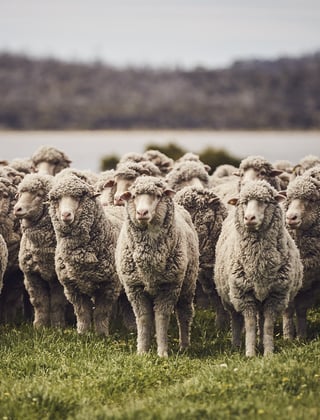Wool’s eco-credentials pass the smell test

The natural odour resistance of wool garments is well known for keeping the wearer fresher for longer. But according to new AWI-funded research, wool’s odour resistance also benefits the environment because less energy is needed to launder wool garments compared to polyester or cotton garments during their use phase.
KEY RESEARCH RESULTS
- New research shows that the frequency garments need to be laundered, based on their odour, differs significantly depending on the fibre type of the garment.
- Polyester garments consistently had fewer consecutive days of wear than wool or cotton garments before washing was deemed necessary by the participants in the odour trial.
- Over the course of a year’s use, the wool garments in the study would require the lowest energy consumption during laundering, whilst the polyester garments would require the highest followed by the cotton garments.
When assessing the impact of clothing on the environment, people often focus on the beginning and the end of the garment’s lifecycle, namely the production of the fibre and garment, and the disposal of the garment.
However, the ‘use phase’ of a garment – that part of the garment’s life when it is owned and worn – has been shown to very strongly affect the garment’s overall environmental impact. Different fibre types affect the use phase of garments in different ways. For example, previous research has established that wool garments have a longer average lifespan and are more likely to be reused or recycled than garments made from other fibres, which is better for the environment.
Laundering also carries a significant environmental impact from its consumption of energy, water and detergents. Wool garments are generally laundered differently than garments made from other fibre types, but the extent to which this reduces energy consumption has received little attention from researchers. Until now.
A recent AWI-funded study into the energy used in laundering garments made from different fibre types has recently been completed – and it is good news for wool. The research was led by AgResearch in New Zealand and carried out in conjunction with Consumption Research Norway (SIFO).
Positive research results for wool
The study used human volunteers to determine the number of days of normal wear that similar garments of different fibre types could be worn before they needed laundering, based only on the participants’ assessment of the garments’ odour.
The garments used in the study were base-layer garments (T-shirt), mid-layer garments (hooded sweater) and pairs of socks. There were three similar garments of each garment type, each made from a different fibre: Merino wool, cotton or polyester.
The first important result of the research was that there were significant differences in washing frequency based on fibre types. Polyester consistently had fewer consecutive days wear than wool and cotton before washing was deemed necessary by the participants.
The researchers also collected information about typical washing conditions that consumers use when laundering different fibre types and established the energy use associated with all aspects of laundering. Combining this with the wash frequency data allowed the researchers to calculate the energy consumption associated with a year’s use of each garment and fibre type.
The result was that Merino wool had the lowest energy consumption, with polyester the highest followed by cotton. This was applicable for all the three garment types in the study. Merino wool had 76% lower energy consumption than polyester for the mid-layer, 68% lower energy consumption for the base-layer, and 37% lower energy consumption for the socks.
The researchers also noted that, although not measured in the study, the higher washing frequency of polyester garments would also require higher water consumption than for wool garments. The high washing frequency of polyester garments also creates greater potential for microplastic pollution.
The researchers concluded that the results of the study underscore how the natural odour resistance of wool contributes to its lower environmental impact during the use phase.
Robust science helps marketing of wool
AWI Program Manager for Fibre Advocacy and Eco Credentials, Angus Ireland, says the study reinforces the positive eco-credentials of wool in a world where there is increasing concern about society's trend towards ‘fast fashion’ and the effect on the environment of synthetic textiles.
“The fact that wool clothes need less frequent washing not only reduces energy consumption, it also preserves the as-new look of the garment, enabling consumers to continue wearing it for longer,” Angus said.
“By AWI funding scientific studies such as this one, the wool industry is in a knowledge-powerful position regarding the true impact on the environment of wool compared to other fibres. Importantly, the studies enable AWI, Woolmark and the wider wool industry to demonstrate to the fashion and textile trades, regulatory bodies, and consumers that wool is the planet-friendly fibre of choice.
“The results of this particular study also indicate the benefits of focusing environmental research on consumer habits and culture, and not only technologies.”
Top photo credit: nensuria
This article appeared in the Autumn 2025 edition of AWI’s Beyond the Bale magazine that was published in March 2025. Reproduction of the article is encouraged.














